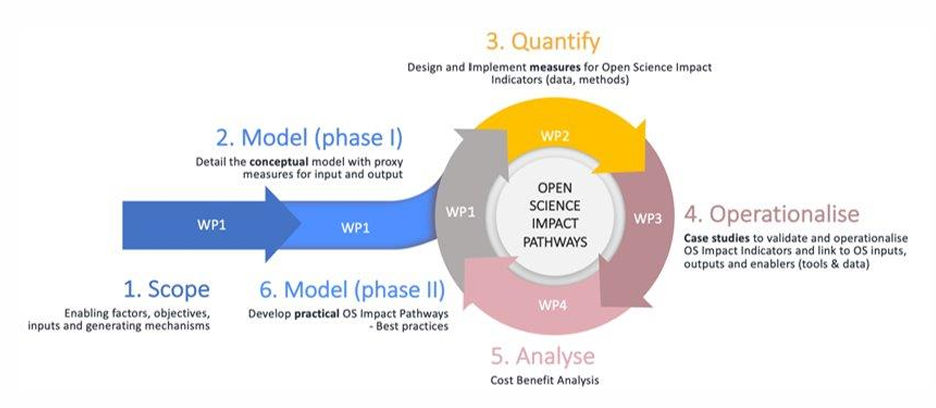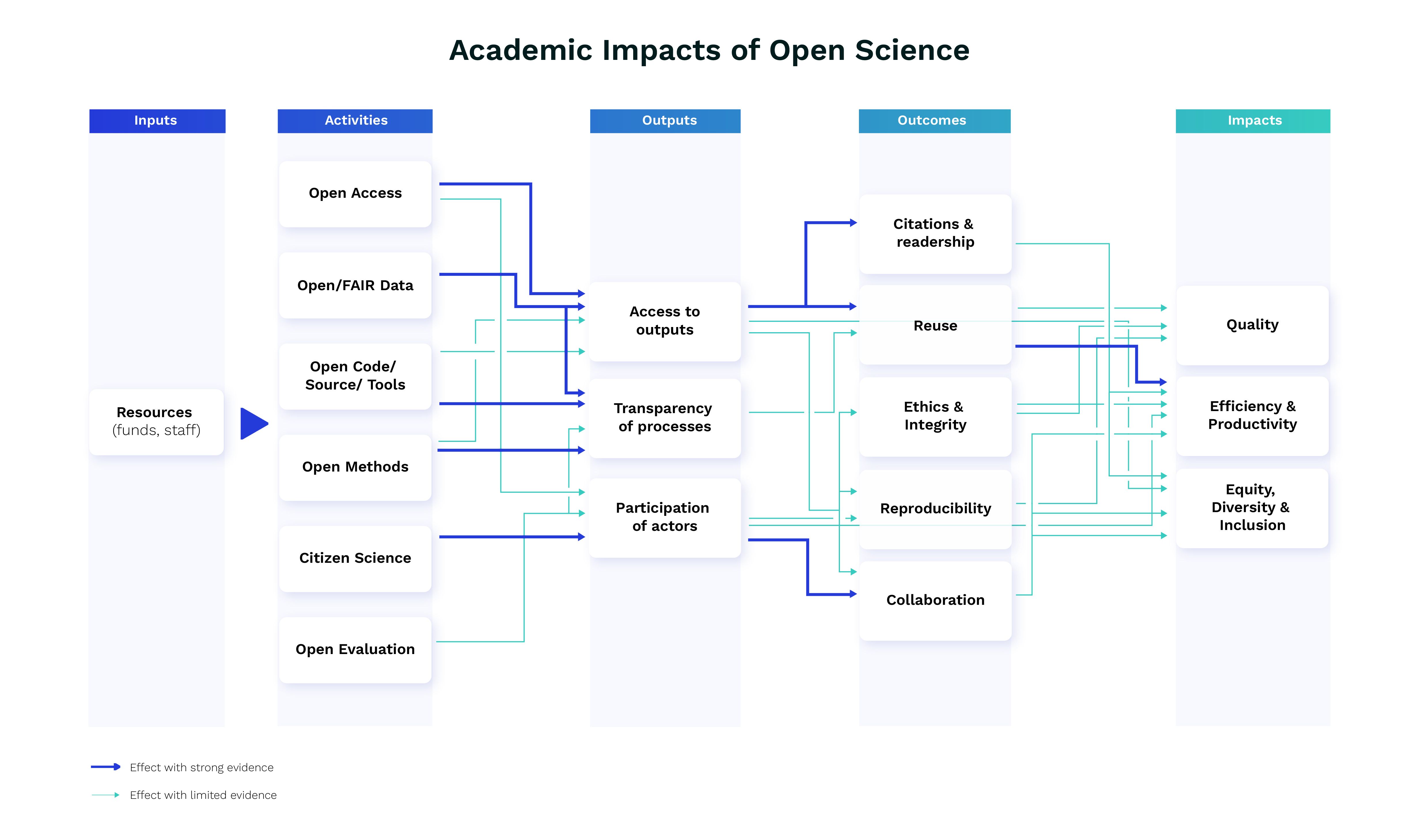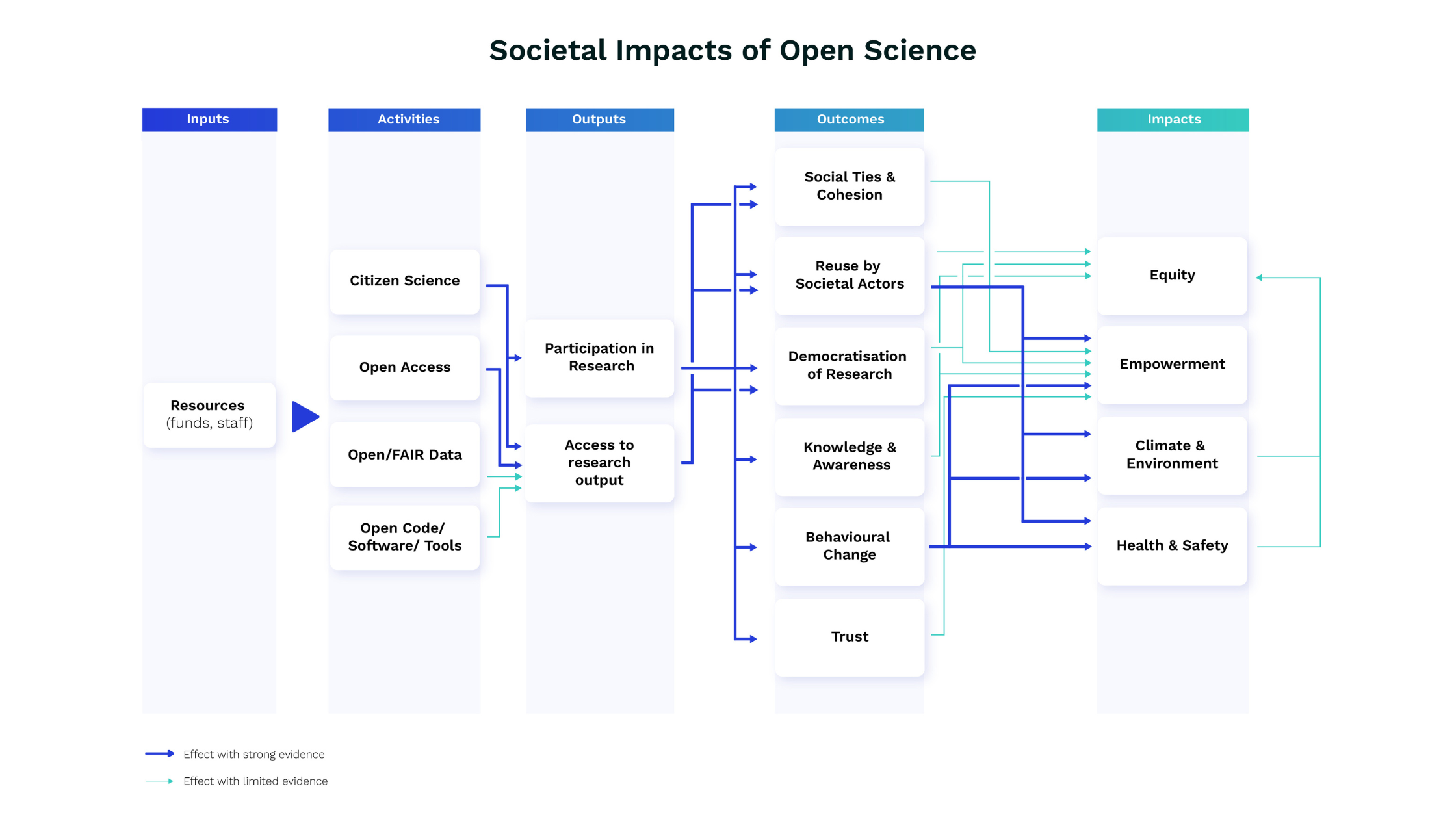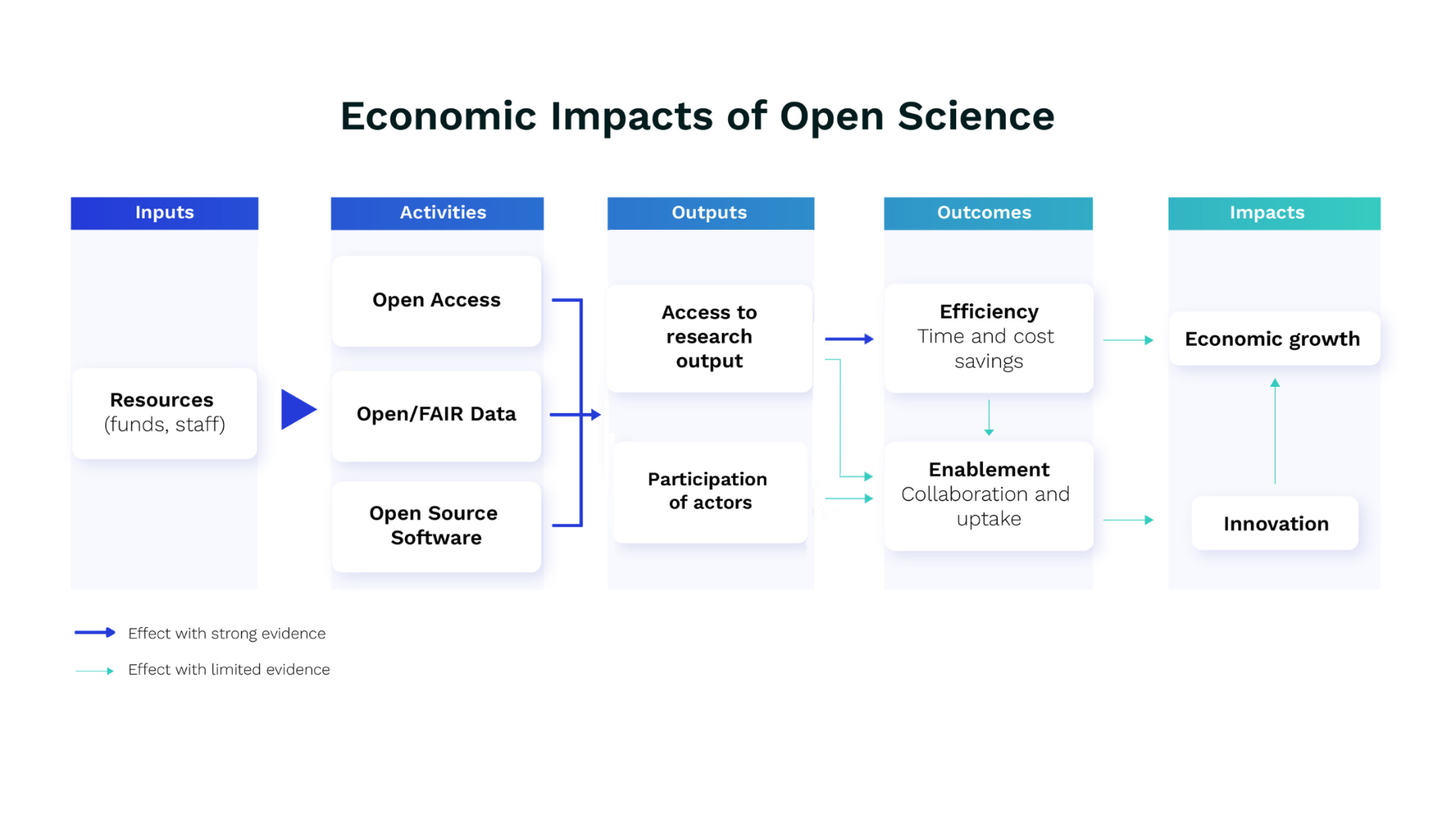Open Science Impact Pathways
The PathOS project, focused on Open Science Impact Pathways, aimed to collect evidence of impacts driven by Open Science, to identify and study the pathways to impact driven by them, and to identify and study both enabling factors of and barriers to impact. The project examined three types of impact: academic, societal and economic, and considered how the pathways to them may intersect or overlap. Aiming to develop an evidence-based understanding of such Open Science impact pathways, PathOS was carried out in six stages.

Our journey to build the validated Key Open Science Impact Pathways was a rigorous, multi-year adventure: we began by scoping and synthesising the published evidence of Open Science impact, looking at academic, societal and economic impacts separately; we then developed a conceptual framework for modelling Open Science impact pathways – an Open Science intervention logic – that we tested and refined throughout the project; next, we created a suite of impact indicators and published them as a living Open Science Impact Indicator Handbook; we operationalised both the framework and the indicators through six in-depth case studies that delivered real causal evidence across academia, industry, and society; we complemented this with cost-benefit analyses framework and two examples of major Open Science infrastructures – UniProt and RCAAP – to strengthen the economic (and broader) case; and finally, we synthesised everything to validate and refine the pathways and distill clear, evidence-based recommendations.
Below are snapshots from the validated model, showing the impact pathways for academia, societal, and economy – each one tracing the precise route from Open Science practices to real-world benefits.
Academic Impact Pathways
We define academic impact with Ravenscroft et al. as “the impact that scientific research has within the academic sphere” (Ravenscroft et al. 2017), hence distinguishing it from broader impacts upon society or the economy. Impacts are “long-lasting, elementary and wide-spread change” that result from the implementation of Open Science practices and process. They can be either “direct or indirect, intended or unintended, [and] relate to behavioural and/or systemic changes” (Dekker et al. 2023).
Our results show that Open Science has a range of academic impacts, from increased citations and research quality to equity and efficiency. However, most evidence is context-specific, with variation across disciplines, Open Science modes, and local conditions. Many findings remain correlational rather than definitively causal, and certain effects may be inconsistent or specific to certain disciplines or other contexts.

Societal Impact Pathways
We define societal impacts from Open Science as “long-lasting, elementary and wide-spread change” that result from the implementation of Open Science practices and process. They can be either “direct or indirect, intended or unintended, [and] relate to behavioural and/or systemic changes” (Dekker et al. 2023).
Societal impact pathways refer to the mechanisms through which Open Science practices generate impacts in society, both positive and negative. The PathOS project provides a conceptual foundation for understanding how Open Science may generate societal impact. As elaborated in the introduction of this report, we understand Open Science as enabling three key things: access to research outputs, transparency of the research process, and participation of diverse actors in research.

Economic Impact Pathways
Economic impacts of Open Science are understood as the long-lasting changes in the economic sphere experienced by users of Open Science artifacts (academic and industrial researchers but also government, civil society, NGOs and society at large), processes and collaborations. We do not address the economics of the publishing sector and its business models. Economic impact measurement faces significant methodological challenges, as economic impact indicators remain less developed compared to academic metrics, and establishing causal attribution across longer time horizons is inherently difficult.
While theoretical arguments for economic impact are well-developed, empirical evidence hashistorically been limited.
- Economic rationale stems from the key concept of knowledge as a public good. The key argument is that Open Science increases research productivity and academic impact leads to economic consequences thanks to higher and quicker uptake of research results by other scientists in academia and industry, also thanks to science-industry collaboration. This process affects the private sector and ultimately drives societal impacts.
- There are also counterarguments: because individuals and companies want to benefit from the new knowledge they create, they may strategically delay publication and data sharing.
Economic impact pathways delineate the causal mechanisms and sequential processes through which Open Science practices generate economic value. PathOS contributes to the empirical evidence base through systematic case study analysis across diverse contexts, offering new insights into economic pathways and their mechanisms. These methodological approaches help illuminate how Open Science practices generate economic value, though significant evidence gaps remain. Economic impact pathways delineate the causal mechanisms and sequential processes through which these practices operate.
